PROBLEM
A lack of activities and engagement in certain streets can lead to a decrease in their vibrancy and vitality. This can manifest in empty streets, dilapidated buildings, and a dearth of social and cultural events. Over time, these areas may become less desirable places to live or visit, perpetuating the cycle of neglect and disinvestment.
AIM
The objective of this project is to gather information regarding people’s preferences and experiences with public spaces and utilize this data to enhance and revitalize these areas, with the goal of increasing their appeal to the general public.
CONCEPT
The concept of digital fabrication and interaction involves the creation of a more immersive and accessible method of presenting data that encourages audience participation. In this project, we have developed an innovative panel that sits on a table and features interactive touch buttons and projection mapping. This enables users to engage with the data and vote on the type of interventions they would like to see in their community. This approach promotes a greater sense of community involvement and ownership over public spaces, while also utilizing cutting-edge technology to enhance the overall user experience.
FABRICATION IDEATION
Our team has designed an interactive panel measuring 900x900mm to enable users to engage with data and vote on their preferred types of public space interventions. The panel is divided into three sections, each serving a distinct interaction purpose. The first canvas provides comprehensive information on the city to help users understand the context of the project. The second canvas displays the route and the abandoned sites along the way on our Map Canvas. Finally, the third canvas invites users to vote on their preferred intervention types.
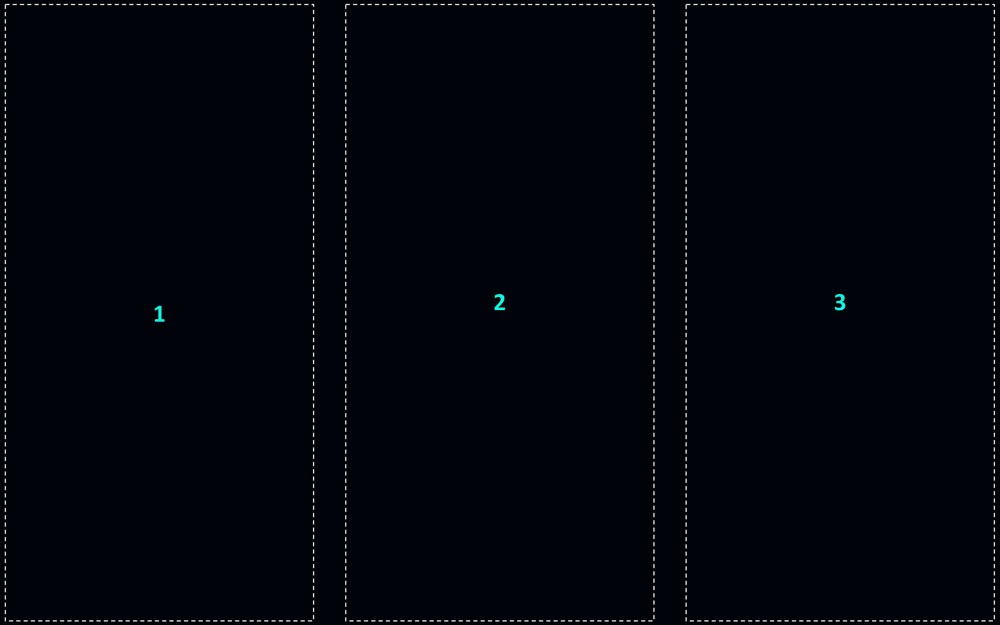
CANVAS
Users begin by selecting their age group on the first canvas, allowing us to determine age-related preferences for interventions. Next, users interact with the points of interest buttons to project them onto the map canvas. After selecting a route, the users can see a graph that highlights which POIs they would be seeing on their way.
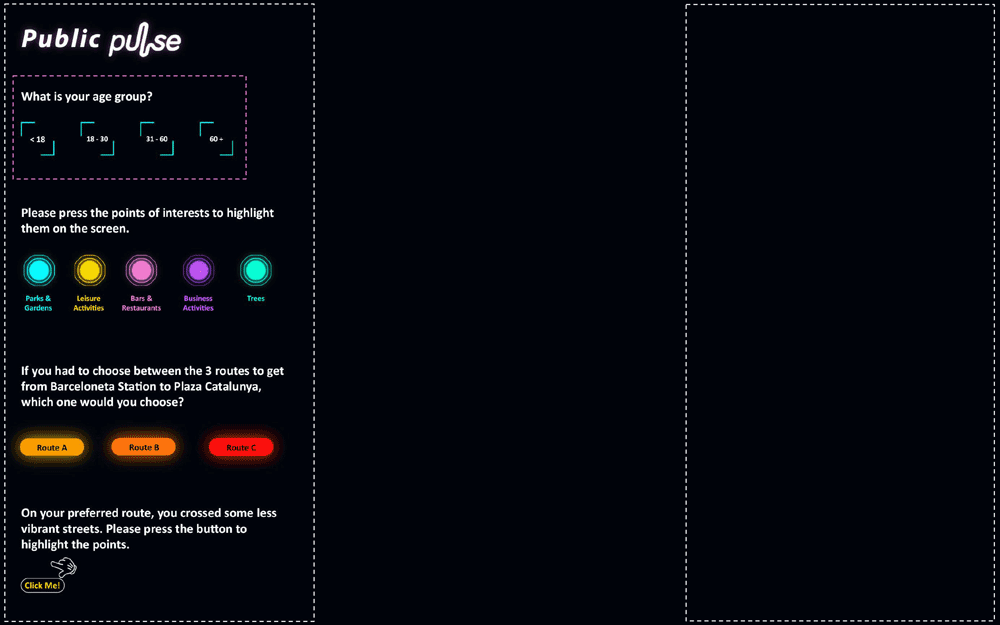
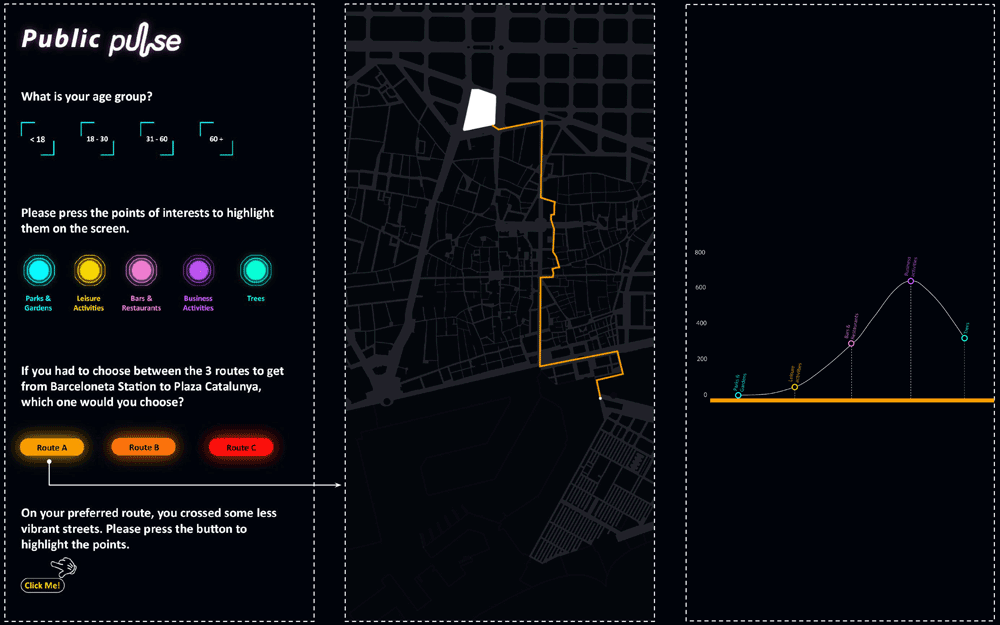
The abandoned sites highlight along the way, and users can touch them to select them, revealing two intervention options on the third canvas. Users then cast their vote on their preferred intervention type. This process provides an immersive, interactive experience that fosters community engagement and ownership over public spaces.
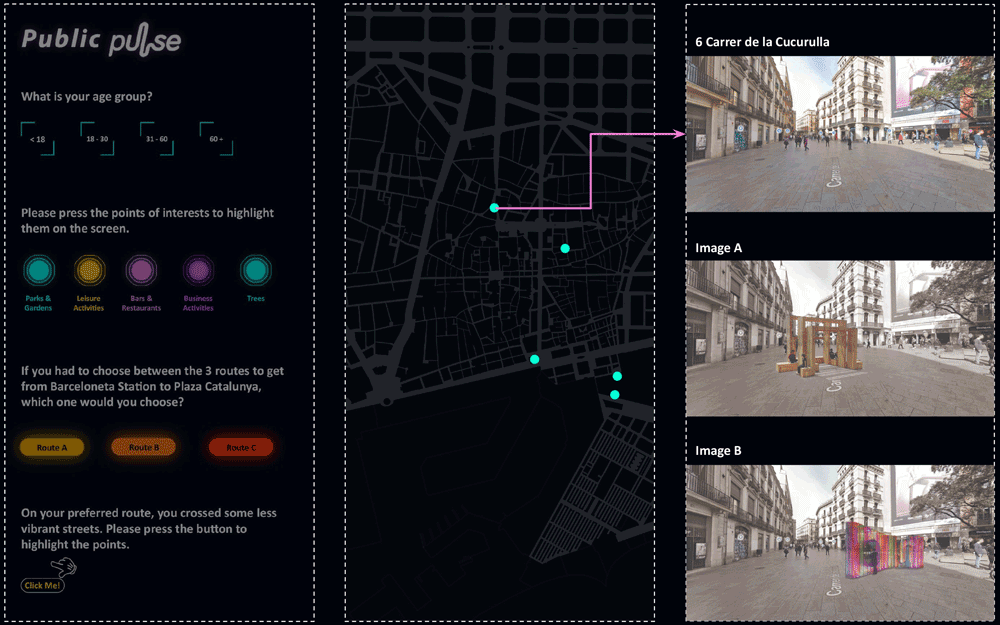
ITIERATION PROCESS
We started creating the panel by painting it white and then used a laser cutting technique to engrave the text and map on it. To make the buttons, we drilled small holes and passed wires through them, which were crucial in collecting signals upon touching.
In our project, We used conductive tape to create electrical connections between different components of the panel. Soldering was used to connect our wires to the tape. We used a hands-on approach to interaction that involved touch. This allowed viewers to physically engage with the panel and give feedback by touching the interactive elements. To make this possible, we connected a capacity board with an Arduino, which helped us measure and monitor user interaction with the installation.
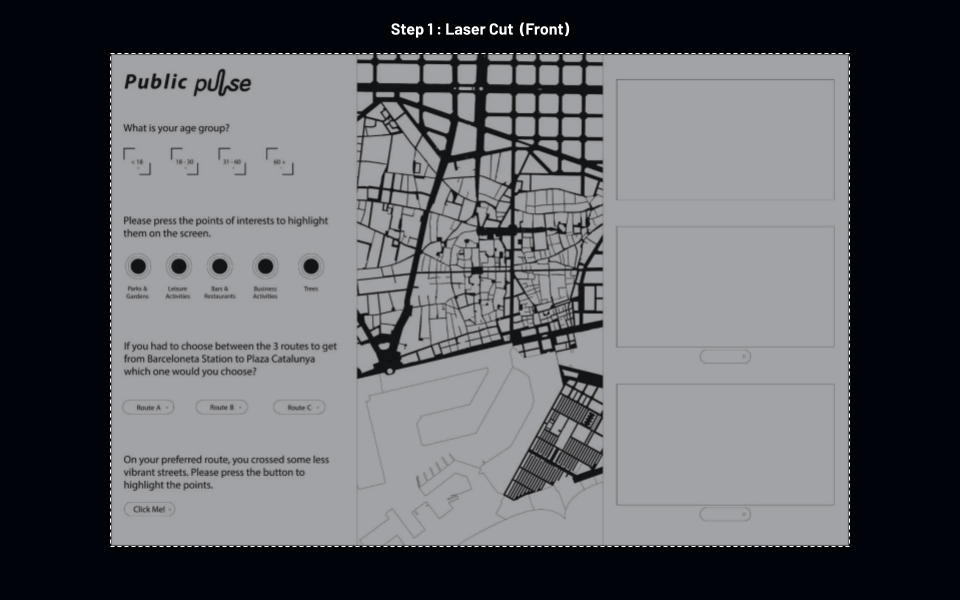
With the touch sensor connected to the Arduino, we were able to activate the projector to display a specific video when a certain input was received. Thanks to these tools, we were able to create a functional and visually stunning panel that effectively communicated information to viewers.
VISION
The larger vision of our project was to gather data from people of different age groups and backgrounds to create a more comprehensive understanding of their preferred routes and interventions for their neighborhood spaces. By using our interactive panel, we aimed to engage the public in a fun and accessible way, allowing them to contribute their opinions and feedback towards the revitalization and enhancement of their public spaces.


